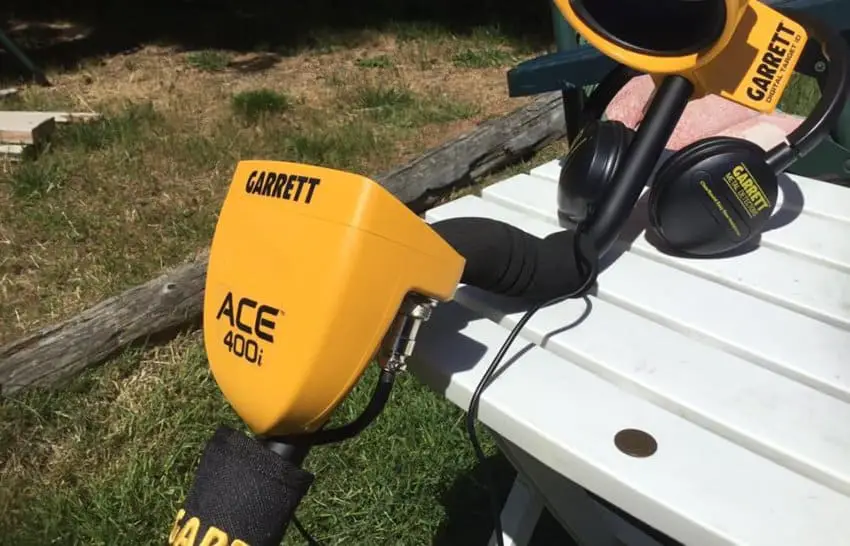
I totally understand that Metal Detectors could be quite intimidating for beginners! But the reality is, once you understand the basics of how this machine work this will definitely go away …
… Indeed, I’ve put together this Post to help you understand exactly how metal detectors actually operate so you will be able to get the most out of it!
Let’s dive in.
How do Metal Detectors Work?
As the name suggest, this is a machine that will allow you to pick up metals, especially non-ferrous ones that are basically the most valuable.
It works by transmitting electromagnetic signals produced by the coil to the ground.
When it detects the target, it energizes the electromagnetic field and starts to transmit the electromagnetic fields.
The searchcoil gets the electromagnetic fields and produce an alert to the person who is searching for the target.
On the market there is a wide range of machines that you can choose from depending, obviously, on your budget, but also on your goal target (Gold, Coins, Silver, Jewelry …) …
… Generally, each machine operates better for a specific set of targets and on specific circumstances! But there are others that can do well for most targets, like this Model (Check it Here at Amazon)
What are the main components of a Metal Detector?
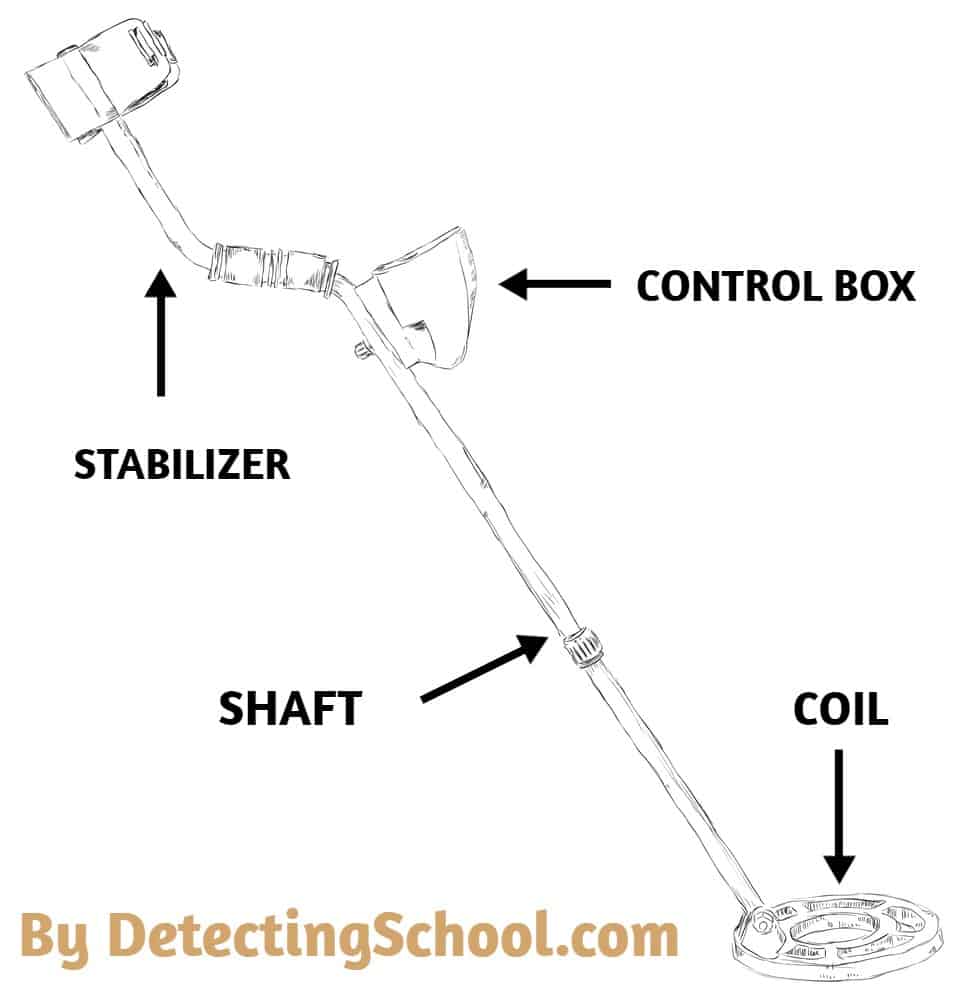
1. Control Box
It is the box that is power-packed with the electronic accessories used in the detector. It generates the transmit signal and successfully processes the receiver signals and sends a response when a target is found.
2. Search Coil
The search coil equipped to the detector transfers the electromagnetic field to the ground, and in return, it produces the electromagnetic signals from the ground.
3. Battery
The battery inside the detector makes it function smoothly. You can recharge the battery when the battery dies obviously.
4. Shaft
There are bigger shafts available in the metal detector, which allows you to stand upright. The shafts are easy to adjust in most modern models.
5. Stabilizer
The stabilizer is connected to the tip of the device to keep it steady when you sweep the antenna to the ground.
Additional Metal Detector Add-ons
1. Headphone
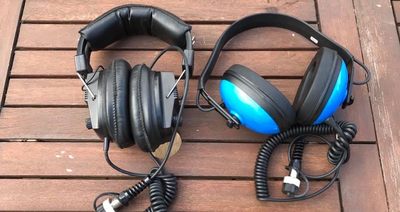
The headphone jack on the machine allows you to connect to the headphones so that you can hear the audio signals.
It is helpful, especially when you are using the detector in a noisy environment. It blocks the outside noise and lets you hear the target tones.
Check My Favorite Headphone Here at Amazon.
2. Additional Search Coils
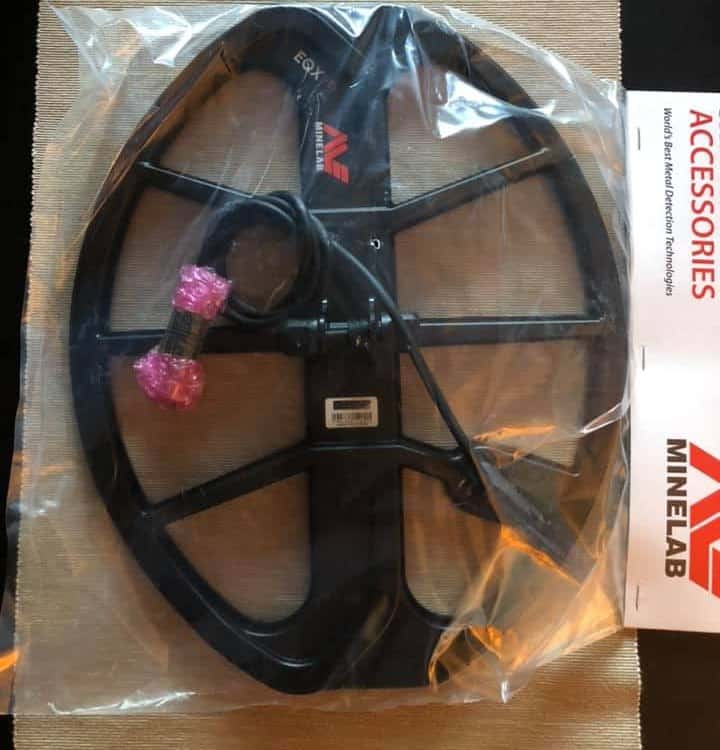
First of all, before buying a detector, you need to make take note of the different coils it is compatible with …
… Indeed, using different coils is really useful to make your machine even more powerful.
In other words, if you use a larger coil, you will be able to cover more space while swinging your machine. This will decrease your chances of missing out on a given target.
This will also help you search deeper!
Even though a smaller coil won’t go as deep, but it will ensure a better sensitivity towards smaller targets.
There several coil types but the mail ones are:
- Concentric: It is round and is cost-effective. It pinpoints the target location briskly.
- DD: It is waterproof in most cases and allows you to detect the target even in relatively conductive ground.
3. Software Upgrades
Not every machine brings this possibility to update the software to the table!
However, there are some models that will allow you to do so, few examples come to mind include:
- Minelab Equinox (Check it Here at Amazon)
- Nokta Makro Simplex (Check it Here at Amazon)
Metal Detector Concepts to Understand
1. Discrimination
The discrimination will help you ignore a certain type of metals!
This feature will allow you to avoid generating unwanted signals when the detector would find the iron and other trash materials … So, it won’t produce an alert unless it finds some valuable item.
This will save your time and effort digging more than necessary!
By the way, if you are on a budget and still need a machine with decent discrimination capabilities, then have a Look at this Cheap Model Here at Amazon.
There are times when discrimination should not be used. Especially if you are exploring a territory for the first time … Then, you shouldn’t mind digging for every signal. This, indeed, will help you learn more about this new location.
2. Ground Balance
There are high chances for you to listen to the false signals when the detector detects salt or iron oxides if you are hunting in a highly conductive ground …
… You can cancel out these false alarms by using the ground balance feature available on the detector.
The cost-effective models would also have preset ground balance.
The advanced detectors have both manual and automatic ground balance options to deliver optimal performance. It circumvents the minerals and does not interfere with finding gold, relics, and coins.
The Garrett AT Pro (Check it Here at Amazon) has one of the best ground balancing abilities in the market.
There are three different types of ground balance available:
- Automatic: It detects and adjusts to the soil conditions and environment automatically.
- Manual: You must adjust the ground balance while searching manually by selecting a specific value from the available range.
- Tracking: Your machine will continuously track the ground conditions and adjust the ground balance to the optimal value.
3. Frequency
The metal detector frequency would decide the number of times the circuit will switch in the current direction. It has a significant impact on the depth and objects size that the machine would be able to find.
Low frequencies give a high ability to penetrate deeper. If you want to scout for the objects that are deeper in the ground, you should go for models that operate at a lower frequency. However, it is not so sensitive to the targets.
You can use higher frequency detectors to detect gold and smaller items. If the frequency is high, you cannot go very deep. Though frequency does not have much impact on the search depth, search coil, and soil composition also play a vital role.
If you are a seasoned detectorist, you must choose to buy the detector that can operate at different frequencies to find big to small targets.
4. Air Tests
Air tests will allow you to know what your machine is capable of by testing it in optimal conditions …
… All you have to do is to turn on your machine, and put different targets close to the machine’s coil and take note of the different target ids you get.
This method will also tell what your machine can’t detect, indeed if you put a small gold nugget close to the coil and can’t detect it, then chances are, it won’t be able to do that on the ground.
I encourage you to do air tests each time you buy a new machine, that’s a great way to lean it.
5. Iron Bias
This feature could be a little bit confusing, but to make it simple …
… Imagine in a specific location 2 objects (one is iron, the other is a coin) are buried in exactly the same location, what will happen when your machine go over it?
Are you going to get a signal due to the junk iron or due to the coin? Here when comes the role of the iron bias feature …
… Your metal detector doesn’t know that it is dealing with 2 targets, so you need to set the iron bias feature to:
- High: in case you want your machine to judge that this is junk metal.
- Low: in case you want your machine to judge that this is non-ferrous valuable metal.
6. Depth Indicator
This is a cool indicator that you should see in many models that give you an approximate on how deep you target is …
… It is particularly useful if you don’t want to dig for a given target deeper than necessary!
7. VDI Chart
The VDI scale is a range of numbers generally going from 0 to 100 and would have non-ferrous items on the higher end and ferrous items on the lower items.
The rule of thumb is the higher is the electrical conductivity of your target the higher the VDI number will be, and vice versa.
8. Pinpoint Mode
When you find the target, you will know the exact location using the pinpoint mode where you can start to dig.
The electronic pinpoint function is available in most of the detectors.
The concentric coil is quick to pinpoint. It is best to choose the handheld pinpointer. It is simple for you to carry and comes with the flashlight so that you can see through the holes.
You can put the laser on the target. When you find the target, you can start to dig.
This should make it easier for you to pull the target that is deeper or surrounded by dirt.
What Can Metal Detectors Detect?
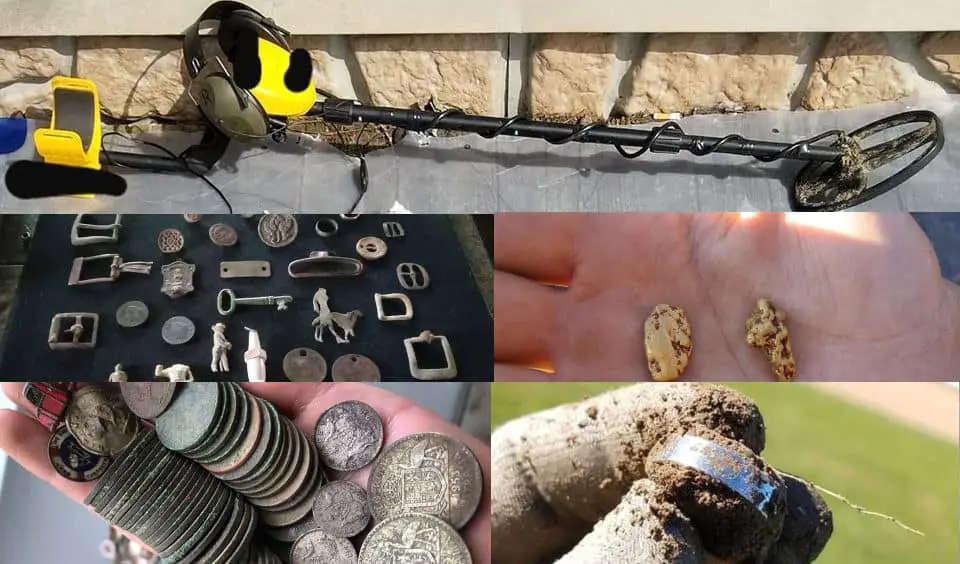
Any metal that has a significant electrical conductivity is detectable, Gold, Silver, Platinum, Titanium, Lead, Iron … All these are conductive, thus detectable …
… For more, check this list of metals that detectors can find.
What Can they Not detect?
Generally, metal detectors could not detect precious and semi-precious stones such as diamonds.
Also, things like woods, plastic and liquids are not detectable.
For more, check this list of metals that detectors can’t find.
How Ground Condition influence detection capabilities?
There is a significant impact of the ground condition on your machine detection capabilities!
Soils with magnetic properties generally lead to generate false signals even when the metal is not present in the ground.
It is not easy to detect metals in these ground conditions such as salty soils, black sand, and volcano pipelines.
For more, check the Best Ground Conditions for metal detecting.
Difference between motion and non-motion detecting modes
The difference between motion and non-motion detecting modes is that the motion would require a swinging coil over the target to generate a signal. This will help you maximize your chances to pick up as much find as possible.
Non-motion detectors (pinpointers) on the other hand, don’t require any prior movement; all you need to do is to keep the machine as close as possible to the target to get a signal.
Those 2 modes are complimentary, that’s why most modern machines have a non-motion mode on them, so you get 2 searching modes in one machine.
Metal Detector Types
There are several types of detectors out there, but the main types include:
Very low-frequency: These are lightweight and cost-effective and are adapted for hobbyists looking for things like coins, relics, silver (learn more about metal detecting for silver) and even proceeded gold.
Have a look at these VLF Detectors to learn more.
Pulse induction: are quite expensive and are used only for specialized hunting, especially saltwater hunting. Even if you are dealing with the most relentless grounds when it comes to mineralization, it still performs very well!
Have a look at these PI Detectors to learn more.
Multi-frequency detectors: You can set the frequency of the detector as per the requirement. It is versatile that you can use in the saltwater beach or on the ground.
Have a look at these Multi-frequency Detectors to learn more.
Detector’s Depth Influencing Factors
Various factors have a direct or indirect impact on the detection depth of your machine:
There are External factors such as depth of the object, type of soil, the slope of the ground, metal object size, metal type, and rainfall.
Plus, the internal factors that impact the coil, technology type, and frequency are the size of the coil.
To learn more about this, just have a look at this metal detector depth guide!
Who, Where, and When Metal Detectors were invented?
This machine was invented by James Maxwell way back in the 19th century using the theories of detecting metals.
The handheld model was invented in 1874 by Gustave Trouve, who hails from French.
Since 1920, many started using metal detectors. Gerhard Fischer registered the patent rights in 1925
What are the other Metal Detector Industrial Applications?
In addition to the hobby aspect of this machine, metal detectors have numerous other applications …
… These include the:
- Food industry
- Plastic industry
- Recycling industry
It gives the possibility to detect metallic contaminants present in the food products for example to protect the consumers.
Not to mention the security usage where security detectors scan people entering to a certain location to make they are metal free.
Conclusion
Hope this article was helpful enough for you and has helped you understand what detecting machines are all about …
… If you want to get started with this wonderful hobby, than I highly invite you to start searching in the beach! For that just have a look at this Beach detecting guide! You will learn a Lot!!
